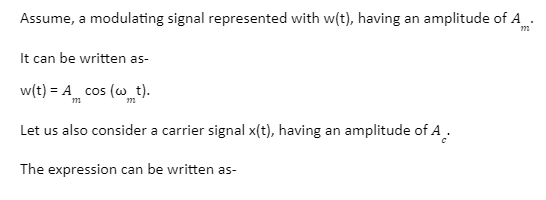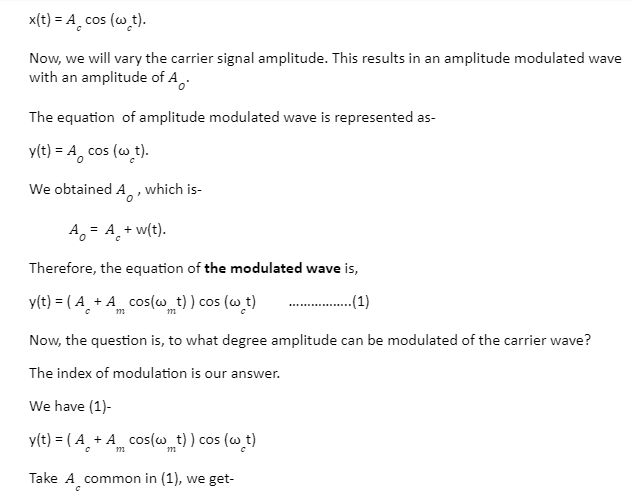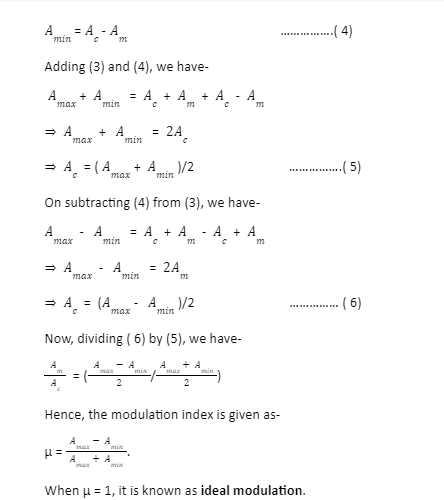Amplitude measures the change of a periodic variable in a period. The method of varying properties of a periodic waveform is termed modulation. Modulation signal contains information that is to be transmitted. Modulation functions to impress the information into carrier waves. Amplitude modulated wave examples can be audio signals or sounds, video signals or moving images from a camera, and digital signals or binary sequences.
The method of changing the wave amplitude per the signal wave amplitude is called amplitude modulation. Low-frequency signal messages are superimposed with waves having a higher frequency. This is done by varying carrier wave amplitude. Amplitude modulated waves examples are in many forms of communication, broadcasting various radio waves, and in computers in Wi-Fi.
Theory of Amplitude Modulation
Transmitting information directly with a signal is a complicated task. Because several factors degrade the quality of message signal over transmission, resulting in a highly degraded signal to the receiver. That is why modulation was introduced.
The easiest way of modulating a message signal is amplitude modulation. In this, only the carrier wave amplitude is modified. It will not change the frequency and phase, etc.
In amplitude modulation, the modulating signal and the message signal need to be transmitted. After modulation of these two signals, we get an amplitude modulated wave. This wave has a time-varying amplitude, having a similar shape as a message signal, called an envelope.
Expression of Amplitude Modulation
Linear Modulation and Over-modulation
The amplitude-modulated wave has two categories determined from the value of the index of modulation:
Linear modulation:
When µ is less than 1, linear modulation is observed. Here, µ is the modulation index.
Overmodulation:
When µ is more than 1, overmodulation is observed. Here, µ is the modulation index.
Linear modulated wave is preferred over the over modulated wave. It is because the amplitude of the over modulated wave becomes zero at a certain point in time. It means that at that point, the amplitude is not modified as per the message signal. Hence, resulting in distortion of the signal.
Transmission Efficiency
The ratio between the power by which the message signal is sent and the total power sent or transmitted through the AM wave system is known as Transmission Efficiency.
Once the transmitted signal is received, we need to distinguish the carrier wave from the message signal apart from the transmitted signal. So, the power required to send the message signal and the total power consumption is separate.
We will now discuss the merits and demerits of amplitude modulation-
Merits
It is the most straightforward technique of modulation.
The transmitted wave can be easily demodulated using this technique.
It is a cheaper and cost-efficient technique of modulation.
Demerits
Because of the presence of noise, there is high signal attenuation.
Efficiency is low.
Conclusion
Amplitude modulation is considered the earliest technique for the modulation of signals. It is used for audio transmission among several modulation techniques. Amplitude modulated waves examples are in many forms of communication, broadcasting various radio waves, in computers and Wi-Fi.
The modulating and message signals are to be transmitted together to obtain the transmitting signal. Then the amplitude modulation technique is used to send a wave or signal. And then, at the receiver’s end, the wave is demodulated, and the original data is obtained.
 Profile
Profile Settings
Settings Refer your friends
Refer your friends Sign out
Sign out










